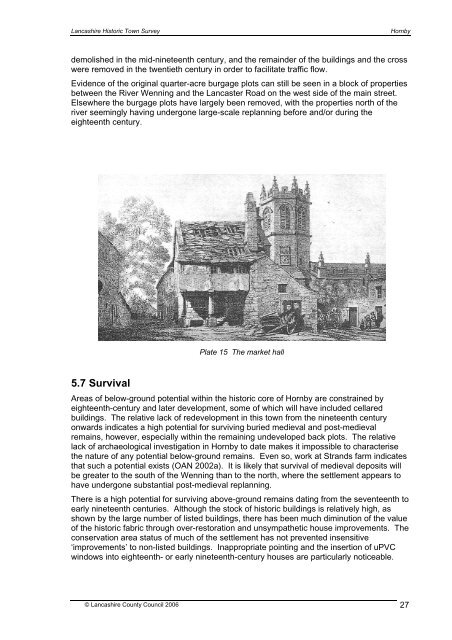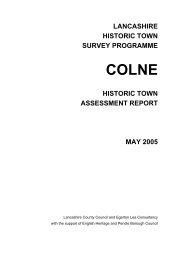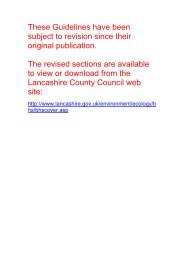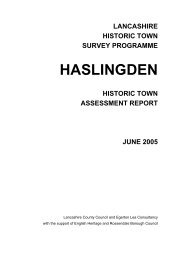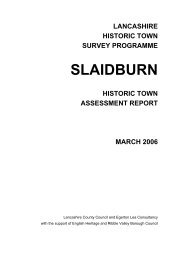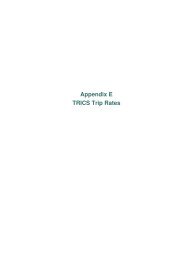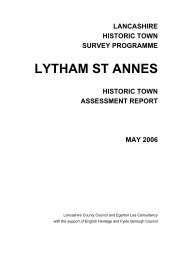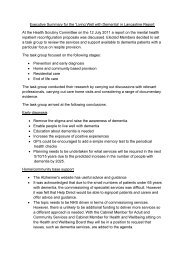HORNBY - Lancashire County Council
HORNBY - Lancashire County Council
HORNBY - Lancashire County Council
You also want an ePaper? Increase the reach of your titles
YUMPU automatically turns print PDFs into web optimized ePapers that Google loves.
<strong>Lancashire</strong> Historic Town SurveyHornbydemolished in the mid-nineteenth century, and the remainder of the buildings and the crosswere removed in the twentieth century in order to facilitate traffic flow.Evidence of the original quarter-acre burgage plots can still be seen in a block of propertiesbetween the River Wenning and the Lancaster Road on the west side of the main street.Elsewhere the burgage plots have largely been removed, with the properties north of theriver seemingly having undergone large-scale replanning before and/or during theeighteenth century.Plate 15 The market hall5.7 SurvivalAreas of below-ground potential within the historic core of Hornby are constrained byeighteenth-century and later development, some of which will have included cellaredbuildings. The relative lack of redevelopment in this town from the nineteenth centuryonwards indicates a high potential for surviving buried medieval and post-medievalremains, however, especially within the remaining undeveloped back plots. The relativelack of archaeological investigation in Hornby to date makes it impossible to characterisethe nature of any potential below-ground remains. Even so, work at Strands farm indicatesthat such a potential exists (OAN 2002a). It is likely that survival of medieval deposits willbe greater to the south of the Wenning than to the north, where the settlement appears tohave undergone substantial post-medieval replanning.There is a high potential for surviving above-ground remains dating from the seventeenth toearly nineteenth centuries. Although the stock of historic buildings is relatively high, asshown by the large number of listed buildings, there has been much diminution of the valueof the historic fabric through over-restoration and unsympathetic house improvements. Theconservation area status of much of the settlement has not prevented insensitive‘improvements’ to non-listed buildings. Inappropriate pointing and the insertion of uPVCwindows into eighteenth- or early nineteenth-century houses are particularly noticeable.© <strong>Lancashire</strong> <strong>County</strong> <strong>Council</strong> 2006 27


